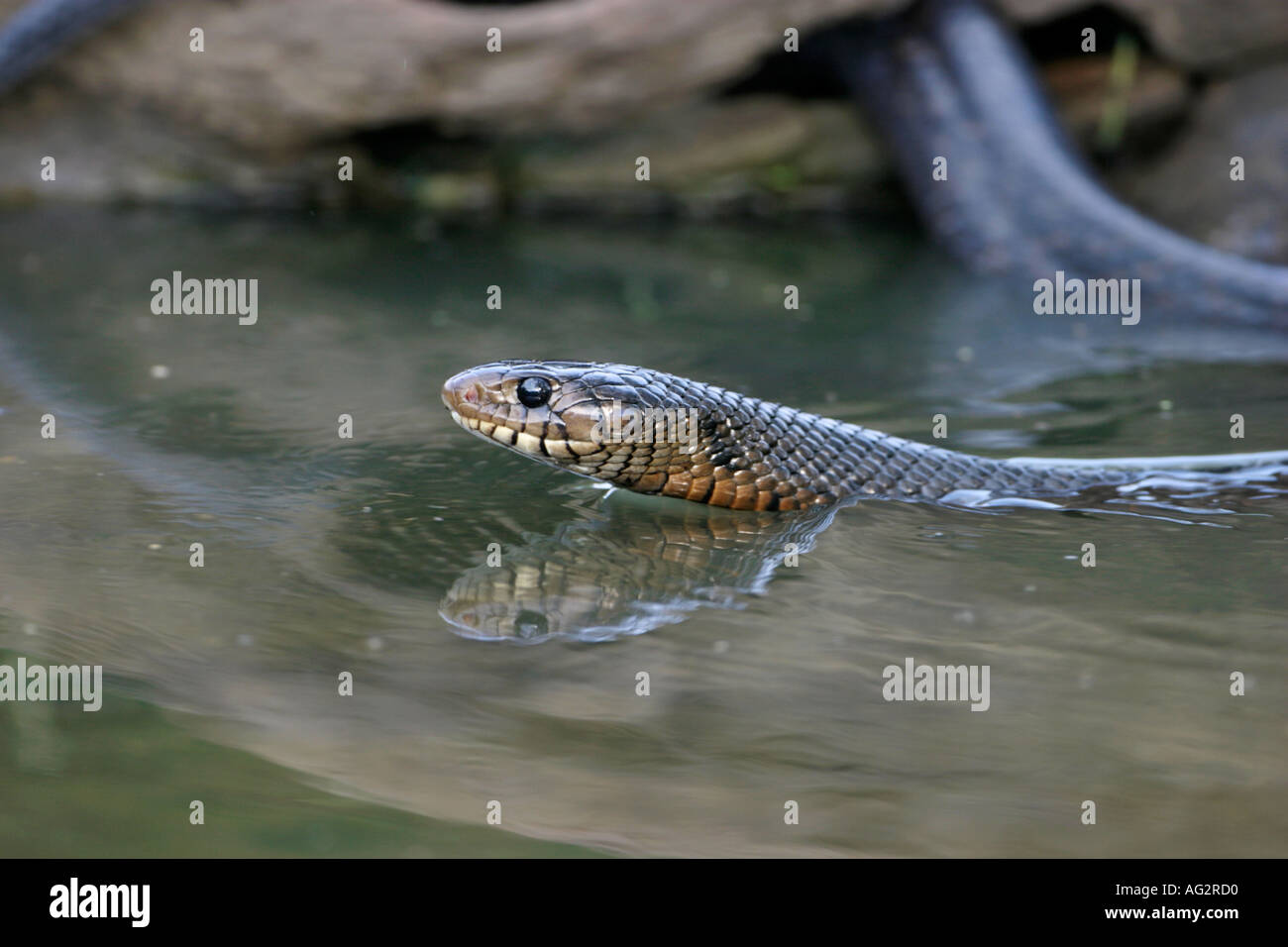

We conducted daily surveys of known indigo habitat hoping to catch a glimpse of these striking snakes.

The most recent trip was in February of 2012, and I was fortunate enough to participate along with two other NZP staff members. Each keeper spent about a week working in the field with the Orianne Society’s seasonal field biologist Andy Day and their Director of Inventory and Monitoring, Dirk Stevenson. The Smithsonian’s National Zoo’s Reptile Discovery Center recently sent several Animal Keepers to Georgia to collaborate with Orianne Society staff. They use their conservation work with the indigo snake as a model for other initiatives such as their pit viper conservation program focused on the eastern diamondback rattlesnake. Now using the eastern indigo snake as their flagship species, they work nationally and internationally to conserve reptiles and amphibians. As a result, the Kaplan family created the Orianne Society to save the eastern indigo snake. Following her encounter with this beautiful reptile, she asked her father if he could do something to save them. This organization was founded in 2008 in response to a little girl’s infatuation with an indigo snake she was given the opportunity to hold. The Orianne Society is a wildlife conservation organization working to save the threatened eastern indigo snake. These large-bodied snakes eat a variety of vertebrates, using their considerable size and strong jaws to overpower its prey. The northern part of their range includes southern Georgia where the snakes use gopher tortoise, burrows to escape the cold in the winter. They are beautiful, uniformly black but in sunlight they are remarkably iridescent, with a wash of bright orange-red on their chin area (see photo to the left). They live in a variety of habitats depending on the region. Horrifying study suggests pythons kill their prey by squeezing until the brain becomes over-pressurized.By Lauren Augustine, Reptile Discovery Center Keeper at the National ZooĮastern indigo snakes, Drymarchon couperii, are the largest nonvenomous snake in North America. Related content: A scientific use for… used tampons?!? Snakes are ‘righties’–with their penis, that is. Wearing long denim pants as an alternative to shorts may provide a simple, low-cost means of reducing the severity of snakebites. CONCLUSION: In our model, denim clothing proved effective at reducing venom injection by both small and large rattlesnakes.

Large rattlesnakes struck more readily, maintained longer fang contact during the bite, and delivered 26 to 41 times more venom into gloves than small snakes. Several findings suggested that denim interfered with venom delivery, including the high proportion of dry bites for denim-covered gloves and the large quantity of venom spilled harmlessly on the denim cover. Latency to bite, number of bites, and duration of fang contact during the bite were similar for the 2 glove types, suggesting that the 2 targets elicited similar defensive behaviors and strikes. RESULTS: The snakes injected significantly less venom into denim-covered gloves than bare gloves during defensive strikes, with a 60% reduction for small snakes and 66% for large snakes. Each snake was videotaped biting a bare glove and a denim-covered glove. METHODS: In a laboratory study, we used model human limbs (warm, saline solution-filled gloves) to elicit defensive strikes from small and large southern Pacific rattlesnakes (Crotalus oreganus helleri). We seek to learn whether ordinary clothing (denim material from blue jeans) interferes with the kinematics of venom delivery, thereby reducing the amount of venom injected by a representative viper into a human limb.

STUDY OBJECTIVE: Venomous snakebites can be painful, costly, and potentially life threatening. Jackson wore jeans on that plane! Denim clothing reduces venom expenditure by rattlesnakes striking defensively at model human limbs. Turns out the snakes were only able to inject a third of the venom into the be-jeaned limbs, leaving venom to be harmlessly absorbed by the denim fabric. These scientists filmed rattlesnakes striking fake limbs, some of which were covered in denim. But how can you protect yourself if you do happen to get bitten? According to this study, one way to reduce your venom exposure is to wear jeans. Image: Flickr/Brent Myers Snake venom is something best avoided entirely.


 0 kommentar(er)
0 kommentar(er)
